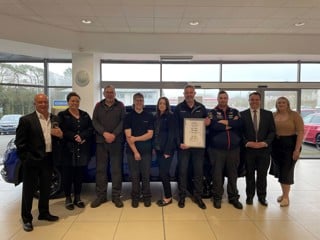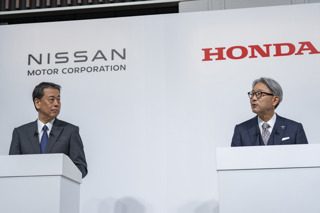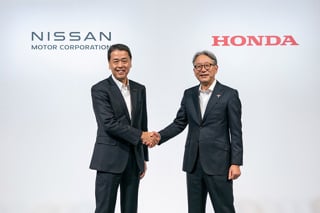Honda has made a modest start with its C It Now (CIN) dealership-to-home video technology, which it says “promises to revolutionise car sales”.
The idea is that buyers in their homes can take a live detailed tour of a new or used car via a camcorder held by someone at a dealership.
The technology – the video goes via a broadband internet connection – removes the need to visit a dealership. And a car can be purchased without the buyer seeing it in the metal.
A Honda spokesman said: “We’re not necessarily expecting people to buy a car without seeing it in the metal. The technology is not replacing the showroom experience – it is providing another element of research customers can carry out from home.”
He said it was especially useful for people who liked the look of a car from an internet 2D image and wanted to know more before making a journey to a showroom.
Holdcroft Honda in Stoke-on-Trent was chosen to conduct the global pilot trial for Honda. A year on, dealer principal Adam Parrott reports only five sales – all used cars – directly attributable to CIN.
But the technology was improved last November and the idea has its supporters.
Parrott said: “I think we were chosen because we have been proactive with a photo studio on our website.”
Jay Nagley, managing director of Spyder RedSpy, which supplies websites and associated technology to the industry, said Honda was applying a professional appr-oach to an evolving process.
“CIN is a very good idea which may be the norm in five years or less,” he said.
“Selling cars in classified ads began 30 years ago. Pictures were added a decade ago.
“Videos have since been added and active videos are the next step to enable dealers to sell cars further afield.”
Honda is still assessing how well the CIN technology works: “Only if it proves a success will it be promoted within the network,” said the spokesman.
Janice Kennedy, Honda UK head of sales, said people were researching and buying cars in different ways.
“We’re trying to meet that demand,” she said. “CIN allows people to shop for cars at their leisure, a real bonus for those who don’t want to make the trip to a showroom.
“Also, some people feel more relaxed and able to ask questions openly when they are not face to face with a salesperson.”
Living-room car buyers can ask the dealership representative to zoom in on details of the car and are sent a link to the video so they can access it later.
Kennedy believes CIN is especially beneficial for sales of used cars, and Honda reckons the recession will mean 2009 will be the strongest year yet for sales in their approved programme.
Someone interested in a car can inspect it closely and pose questions on detailed points before making a journey to view it.
For dealers, CIN raises issues over territories. If it catches on all users of CIN or any other similar applications can take a look at cars hundreds of miles away.
Holdcroft Honda’s five CIN sales were to people living in Devon, Kent, Surrey, Wiltshire and London – all far away from the dealership in Staffordshire.
The Honda spokesman said: “All dealers market themselves nationally and arguably internationally via the internet. It’s the customer’s decision where they buy a car from.”
He said that after a CIN inspection a customer could discuss finance or any other details with someone at the dealership.
Honda believes CIN offers advantages to dealers. They could offer better customer service than competitors and the system eradicated the need for mystery shopping while also providing opportunities for training.
Customers spent more time with a dealer who was able to make more effective presentations. It was possible to establish a stronger relationship with a customer earlier in the buying process.
Honda believes CIN also provides a future opportunity for new car sales as it could help to convert some of the 50% of test drives that did not result in a sale.


















Login to comment
Comments
No comments have been made yet.